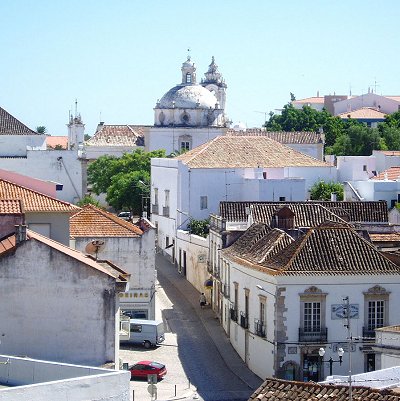
Like us on Facebook
PLACE NAMES




|
|
Tavira
|

|
|
The city has been rebuilt with many fine 18th-century buildings along with its 37 churches. A 'Roman' (actually Moorish) bridge links the two parts of the town across the River Gilão. The church of Santa Maria do Castelo, built on the site of a Moorish mosque, holds the tombs of Dom Paio Peres Correia and his knights. The church dates from the 13th century and the clock tower has been remodeled from the original Muslim minaret. A bust of Dom Paio Perres Correia who died in 1275 can be seen on the corner of the town hall. Its original economic reliance on the fishing industry has now passed due to changed migration patterns of Tuna and further silting up of the river Gilão.
The population is in the region of 25,000 inhabitants (municipality of Tavira) supporting a military base whilst the surrounding area is still fairly rural and undeveloped. This is now changing due to the demands of the tourist industry and opening of golf courses in the near vicinity. The beach for this town lies past the salt pans and is reached by a ferryboat that takes the visitor to the sand-bar island known as Ilha de Tavira, part of the Ria Formosa. The island and beaches can also be reached from the nearby footbridge in Santa Luzia.
In recent years the architecturally attractive town has been scarred by a new 'modernist' shopping center and many high rise developments but still attracts visitors. House prices have increased sharply in recent years. The development of many golf clubs close to the town has also had an effect.
As one of the popular towns in the Algarve, Tavira benefits from tourism which is the primary aspect of the region's economy. The town features many 18th century buildings and a full 37 churches. At one time fishing was the primary industry but that declined, partly due to the changing migration patterns of tuna fish.
 Feel free to Email me any additions or corrections Feel free to Email me any additions or corrections
LINKS AVAILABLE TO YOUR SITE
| | |





